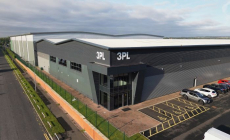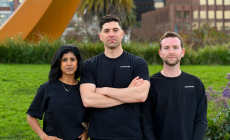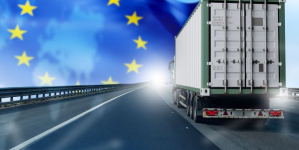-
QUECLINK NAMED LEADING TELEMATICS HARDWARE PROVIDER AFTER YEAR OF GROWTH AND INNOVATION - January 9, 2026
-
Women Leading the Way in the UK Material Handling Industry - December 12, 2025
-
LiftEx 2025 live from Liverpool - December 11, 2025
-
DATA ANALYSIS – THE FOUNDATION OF EVERY PEAK SEASON - December 5, 2025
-
Creative education specialists Creative Hut give 3PL full marks for onboarding excellence - December 5, 2025
-
Unlimited Industries raises $12M to build the AI construction company that will power America’s future - December 4, 2025
-
Scottish Leather Group gets full-support solution from Rushlift - December 4, 2025
-
Etaily lands strategic investment from Japan’s SMBC – bringing total funding to $24M for Social Commerce enablement platform - December 4, 2025
-
Winners lift their LEEA Awards and raise the industry - December 4, 2025
-
Prism eLogistics and Brand Angels Partnership Gives Brands the Full Package - December 3, 2025
White Paper on the assessment of hazardous gases in freight containers
Dangerous levels of toxic gases in freight containers represent a major threat to port and transport workers, customs officials, warehousemen, store employees and consumers. However, the risks posed by these gases can be effectively assessed with Gasmet FTIR multigas analysers. Gasmet has therefore published a video, a white paper and a case study; providing comprehensive help and advice for any employers that need to assess such risks in order to protect the health and welfare of staff and customers.
The air quality inside freight containers varies enormously, depending on the goods, the packing materials, transit time, temperature, humidity and the possible presence of fumigants. Consequently, many containers contain hazardous levels of toxic gases.
Traditional monitoring techniques employ a ‘hit and miss’ approach, but in the new video published by Gasmet Technologies, the advantages of simultaneous multigas analysis are explained. This monitoring capability is provided by the Gasmet DX4040, a portable FTIR analyzer capable of detecting and measuring hundreds of compounds. This ability is demonstrated in the video with containers ‘spiked’ with common contaminants.
The video can be viewed on YouTube or via www.Gasmet.com.
Gasmet has also published a case study on a company in the Netherlands which specialises in the assessment of freight containers with a fleet of 8 portable FTIR analyzers. In addition, Gasmet has created a comprehensive White Paper on Container Gas Analysis, and this is available as a free download from the Gasmet website: www.gasmet.com

































